The growing of willow twigs in Stowmarket led to the development of basket-making; this thrived until the early 20th century. The long flexible twigs, known as osiers, were grown in beds in various parts of the town. These premises housed the building firm Seaman’s for nearly 100 years. Founded in 1912, by Octavius Seaman, the premises were acquired from a monumental and marble mason, who was first recorded on this site in 1839.
Text about The Willow Tree.
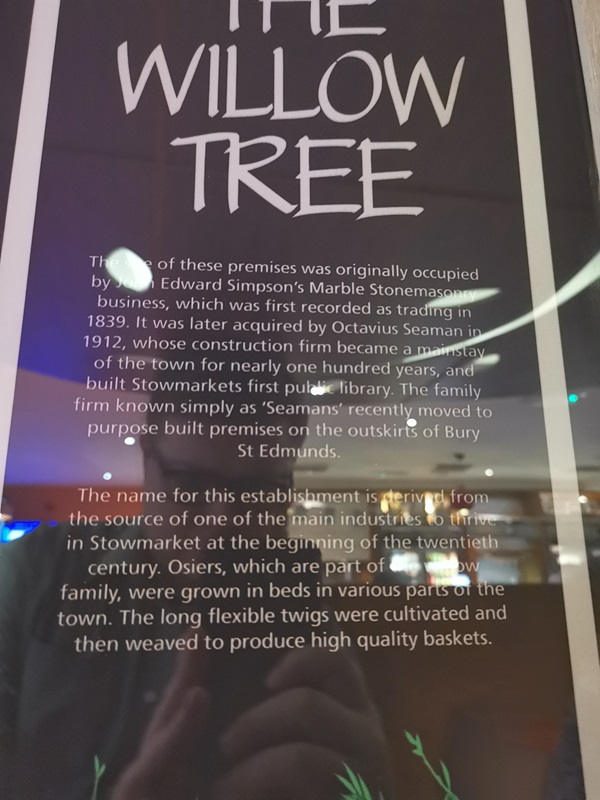
The text reads: The site of these premises was originally occupied by John Edward Simpson’s Marble Stonemasonry business, which was first recorded as trading in 1839. It was later acquired by Octavius Seaman in 1912, whose construction firm became a mainstay of the town for nearly one hundred years, and built Stowmarket’s first public library. The family firm known simply as ‘Seamans’ recently moved to purpose built premises on the outskirts of Bury St Edmunds.
The name for this establishment is derived from the source of one of the main industries to thrive in Stowmarket at the beginning of the twentieth century. Osiers, which are part of the willow family, were grown in beds in various parts of the town. The long flexible twigs were cultivated and then weaved to produce high quality baskets.
A photograph and text about John Peel.
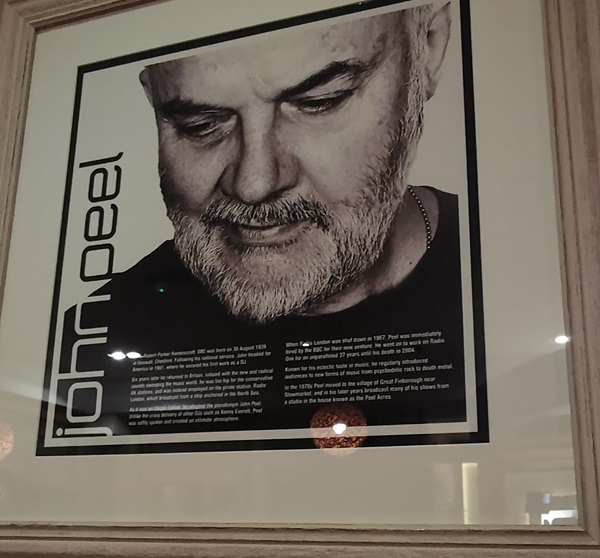
The text reads: John Robert Parker Ravenscroft, OBE was born on 30 August 1939 in Heswall, Cheshire. Following his national service, John headed for America in 1961, where he secured his first work as a DJ.
Six years later he returned to Britain, imbued with the new and radical sounds sweeping the music world, he was too hip for the conservative UK stations, and was instead employed on the pirate station - Radio London, which broadcast from a ship anchored in the North Sea.
As it was an illegal station, he adopted the pseudonym John Peel. Unlike the crazy delivery of other DJs such as Kenny Everett, Peel was softly spoken and created an intimate atmosphere.
When Radio London was shut down in 1967, Peel was immediately hired by the BBC for their new venture. He went on to work on Radio One for an unparalleled 37 years until his death in 2004.
Known for his eclectic taste in music, he regularly introduced audiences to new forms on music from psychedelic rock to death metal.
In the 1970s Peel moved to the village of Great Finborough near Stowmarket, and in his later years broadcast many of his shows from a studio in the house known as the Peel Acres.
Photographs and text about Helmingham Hall.
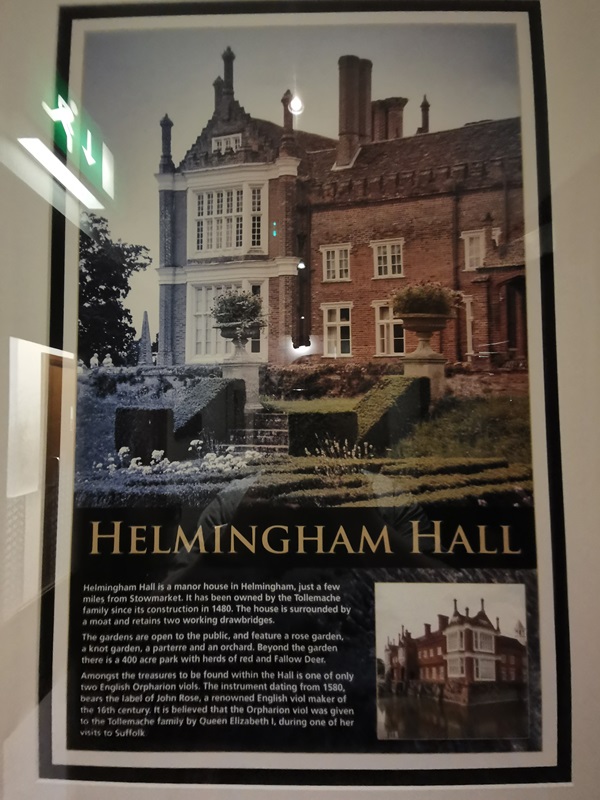
The text reads: Helmingham Hall is a manor house in Helmingham, just a few miles from Stowmarket. It has been owned by the Tollemache family since its construction in 1480. The house is surrounded by a moat and retains two working drawbridges.
The gardens are open to the public, and feature a rose garden, a knot garden, a parterre and an orchard. Beyond the garden there is a 400 acre park with herds of red and Fallow Deer.
Amongst the treasures to be found within the hall is one of only two English Orpharion viols. The instrument dating from 1580, bears the label of John Rose, a renowned English viol maker of the 16th century. It is believed that the Orpharion viol was given to the Tollemache family by Queen Elizabeth I, during one of her visits to Suffolk.
A print and text about John Constable.
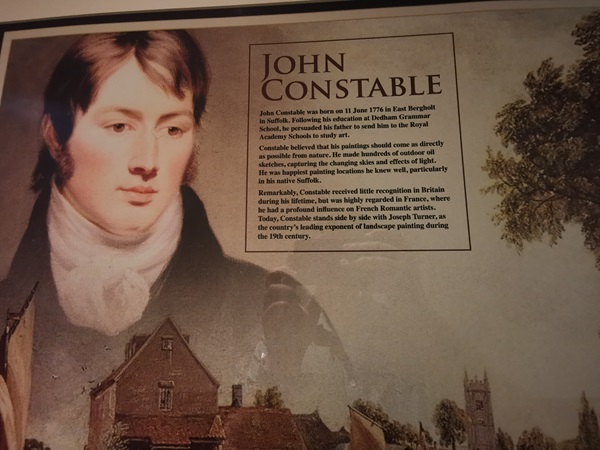
The text reads: John Constable was born on 11 June 1776 in East Bergholt in Suffolk. Following his education at Dedham Grammar School, he persuaded his father to send him to the Royal Academy Schools to study art.
Constable believed that his paintings should come as directly as possible from nature. He made hundreds of outdoor oil sketches, capturing the changing skies and effects of light. He was happiest painting locations he knew well, particularly in his native Suffolk.
Remarkably, Constable received little recognition in Britain during his lifetime, but was highly regarded in France, where he had a profound influence on French Romantic artists. Today, Constable stands side by side with Joseph Turner, as the country’s leading exponent of landscape painting during the 19 century.
External photograph of the building – main entrance.
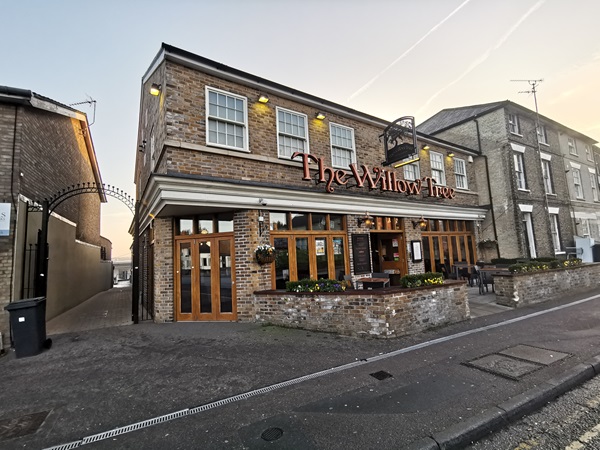
If you have information on the history of this pub, then we’d like you to share it with us. Please e-mail all information to: pubhistories@jdwetherspoon.co.uk